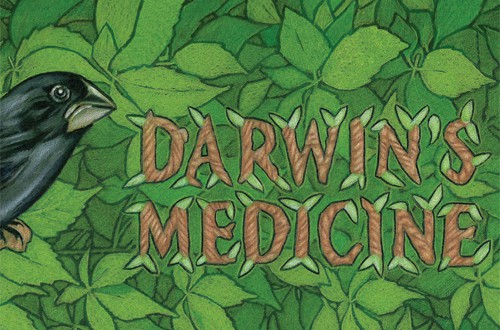
I felt sympathy last month when Novo Nordisk pulled out of inflammation R&D, following some poor phase II results. Novo is a great company, trying to simultaneously dominate its core business in diabetes while evolving into a broader based company. So this news goes to show how difficult evolution is for life science companies. And evolutionary science suggests it’s only going to get harder. As is my habit in Darwin’s Medicine, let me explain the science before I try to draw out some practical implications.
What most of us shorthand as ‘evolutionary theory’ is more accurately described as the neo-Darwinian synthesis, a mid-20th century convergence of several great thinkers’ ideas. One of these was Sewall Wright, an inbreeding expert whose parents, coincidentally, were first cousins. One of Wright’s most useful contributions was the fitness landscape model, a three-dimensional plot of phenotypic traits on the two horizontal axes and fitness on the vertical. I use these models in my work to display how the industry’s social and technological environments interact to create peaks and troughs in the industry landscape.
You don’t need to be a pessimist to worry about the ability of the industry to adapt to the future
In simple terms, successful business models are those well-adapted to occupy peaks in this landscape. Equally, the valleys between the peaks are places of lower fitness. By and large, the evolutionary process of variation, selection and amplification tends to allow business models to evolve uphill but never downhill. Just like species, business models that become less fit over time become extinct. And there’s the problem. Suppose you’re a successful company sitting at the top of your fitness peak and you see the need to move, either because your current habitat is disappearing or you want to occupy a bigger, more profitable peak. To get from one peak to another means going into the valley and evolution doesn’t allow this. Imagine a company losing money for many years while it milked its existing business and invested in another. Sewall Wright, talking of course about biology rather than business, said that there were two factors that influenced the ability of a population to move from peak to peak; variation and selection pressures.
In terms of industry evolution, this translates into one driver and one barrier. Variation and experimentation in practices, strategies, structures and other traits increase the speed of evolution. Strong selection pressures, which punish lack of fitness, slow down the movement from peak to peak. It doesn’t take much to see that our industry – highly regulated, incestuous, relatively slow moving – isn’t a frenzy of business model experimentation. Similarly, shareholder pressures, intense competition and market access pressures add up to intensifying selection pressures. You don’t need to be a pessimist to worry about the ability of the industry to adapt to the future. There is, however, a glimmer or two of hope. Sewell’s brilliant thinking allows for two short cuts across the valley of death. Sometimes, one can find a bridge or causeway across the valley that doesn’t mean going downhill. And sometimes, it’s possible to leap across the valley in a single bound by injecting a clutch of new genes from outside, instead of gradually mutating your own.
OK. Enough hero worship of Sewall Wright, although it is not undeserved. What might bridges and gene-injections look like to a life sciences company trying to cross the valley from one peak to another? Well, the bridges are a set of circumstances where variation in strategies needn’t have a short-term cost. So special funding for some technologies that allow incremental movement from one way of doing things to another would be an example of this. Special payer funds for cancer treatment, government investment in new e-health solutions and joint ventures with payers and providers would be bridges to the new peaks. And leaps across the valley? Well that would be the acquisition of really different new capabilities from another firm by whatever form of relationship. This is rare, much rarer than its incremental, incestuous counterpart. But funds like Roche’s Venture Fund are set up to do just this. But both bridges and gene transplants are uncommon and difficult.
Wright’s thinking suggests most firms won’t emerge from the valley. It also suggests that the new peaks will still be populated but by industries with non-pharma genes. Think Google and Apple perhaps. And lest you think this is too metaphorical, we’ve seen exactly this before. In the late 19th century second industrial revolution, few apothecaries survived and the industry became dominated by firms with a history in dyes and coal tar. Those apothecaries who did survive found bridges or acquired chemists’ genes. But, to end on a positive note, that transition was before Sewall Wright gave us maps. Today’s pharma companies have a better chance of surviving. But only if they read Wright’s maps.




